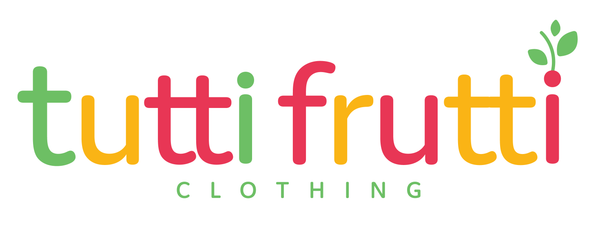 Do you find it difficult to buy children’s clothing that fits the way you want it to? Perhaps you shop from the same places over and over again because you know the clothes will fit your child and you’ve given up buying from a certain shop because the clothes never fit.
Do you find it difficult to buy children’s clothing that fits the way you want it to? Perhaps you shop from the same places over and over again because you know the clothes will fit your child and you’ve given up buying from a certain shop because the clothes never fit.
Like us, children come in all shapes and sizes. What fits one child doesn’t fit another. Big tummies, chunky thighs, little legs or special requirements – there is no one size fits all. Even for children’s clothing.
Most shops have a size guide on their website that will help you choose the right size and fit for your child.
But what if you have never measured your child before? Where do you start?
Don't worry - it really isn't as hard as you might think. Let's get started
A Beginners Guide to Measuring Your Child
To use a size guide correctly you will need to take some measurements from your child. It isn't as scary as it first seems - just follow these simple steps and you will have a set a measurements you can use!
 Firstly, it is important that you buy a soft, tailors tape measure. You can usually get these in the supermarket so they aren't too tricky to find.
Firstly, it is important that you buy a soft, tailors tape measure. You can usually get these in the supermarket so they aren't too tricky to find.
These are the measurements we will be taking:
- Height
- Chest/Bust
- Waist
- Hips
- Inside Leg
1. Height
With your child standing against as wall ask them to stand as straight as possible. Move the heels of their feet to the wall and using a pencil mark where the top of their head comes to. When they move away from the wall you can measure from the pencil mark to the floor - this give their height. Make sure the child is in bare feet or socks to get an accurate reading and be sure to use a very light pencil mark that you can easily erase!
2. Chest
Using you soft, tailors tape measure, pass the measure under the child's arms and around their chest. Do not pull it too tight but it should be snug to get the correct measurement. Make sure the measurement is taken iver a thin t-shirt or vest and not a thick jumper.
3. Waist
Be sure to measure the natural waistline, which is usually above the tummy button! Make sure the tape measure if parallel to the floor and not too wonky and measure around the child's waist. Be sure to measure over a thing top rather than a thicker sweater to get an accurate result!
4. Hips
The hips are the fullest part of the buttocks. Pass the measure around the child and take a note of the measurement. Make sure the child is wearing thin trousers or leggings to get the right measurement!
5. Inside Leg
Ask you child to stand with their legs slightly apart. Measure from the crotch to the ankle. This is the inside leg measurement.
What Do I Do With These Measurements?
Once you have these measurements you will be able to use most size guides. Of course, it is unlikely that your child will fit neatly into one size so look for the one that is the best fit.
I find that it is often better to buy leggings with a waist that fits and roll up the legs which is why I make Tutti Frutti Clothing leggings with a reversible cuff.
If your child is slender you can always purchase the bigger size to match the leg length and ask for a smaller waist elastic - that is the joy of handmade, things can be made to fit!
When buying customised or personalise clothes do be aware that they might not be eleglble for a return.
I hope that you have found this short guide useful. If you are in any doubt over which size Tutti Frutti Clothing item to buy please send me a message via my Facebook Page! I would love to hear from you and help you choose the right size for your child!

 Do you find it difficult to buy children’s clothing that fits the way you want it to? Perhaps you shop from the same places over and over again because you know the clothes will fit your child and you’ve given up buying from a certain shop because the clothes never fit.
Do you find it difficult to buy children’s clothing that fits the way you want it to? Perhaps you shop from the same places over and over again because you know the clothes will fit your child and you’ve given up buying from a certain shop because the clothes never fit. Firstly, it is important that you buy a soft, tailors tape measure. You can usually get these in the supermarket so they aren't too tricky to find.
Firstly, it is important that you buy a soft, tailors tape measure. You can usually get these in the supermarket so they aren't too tricky to find.